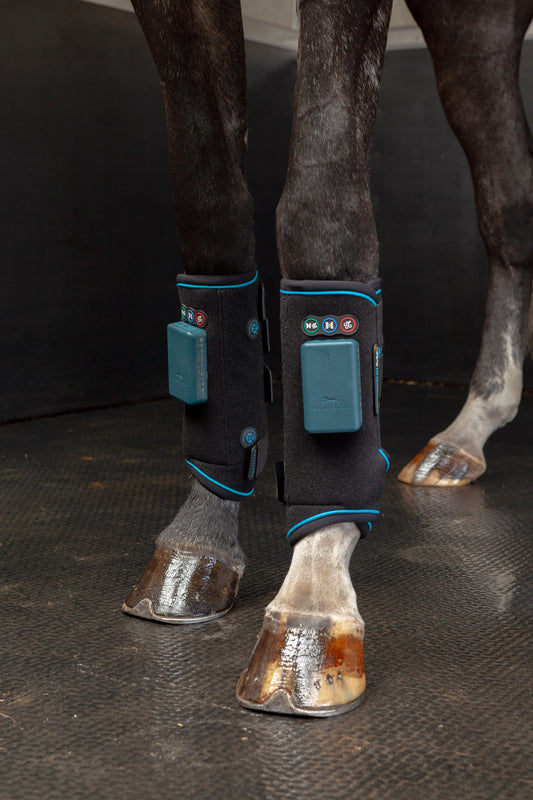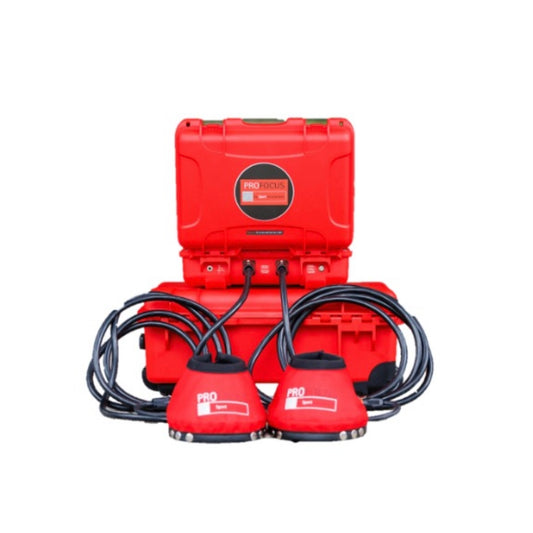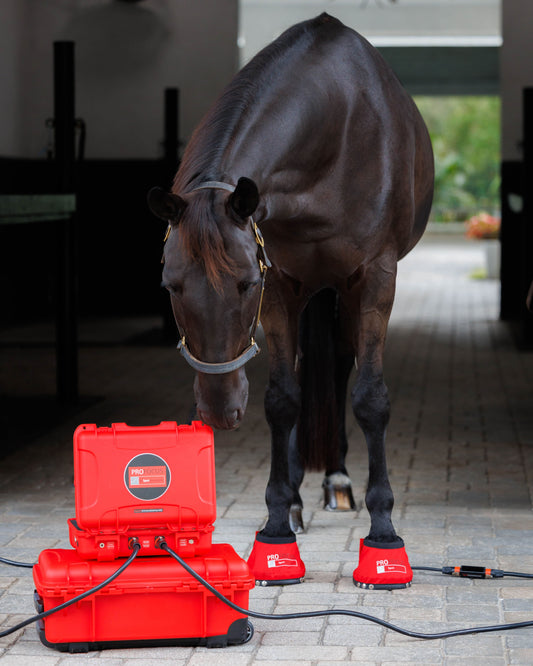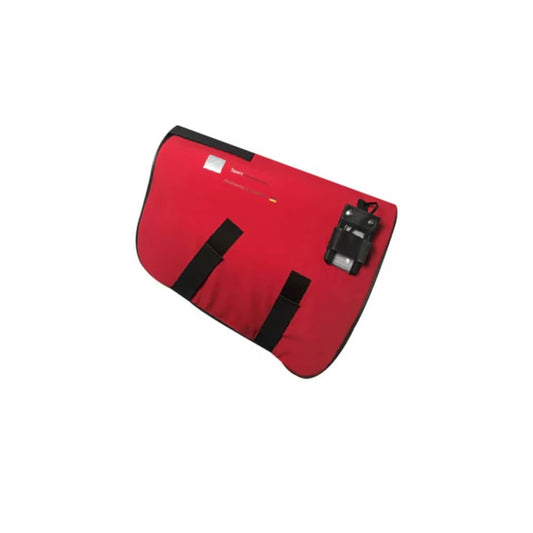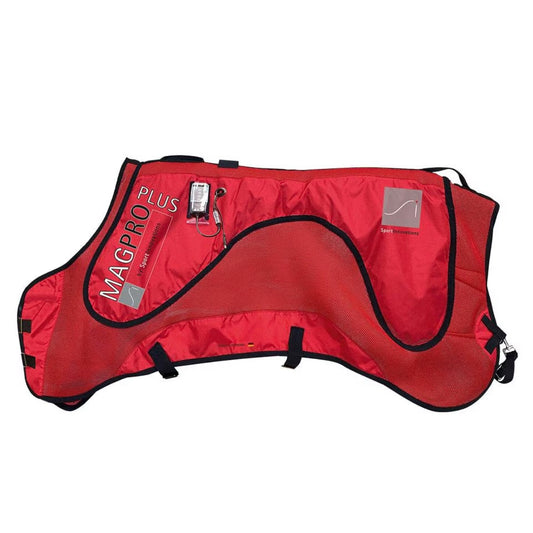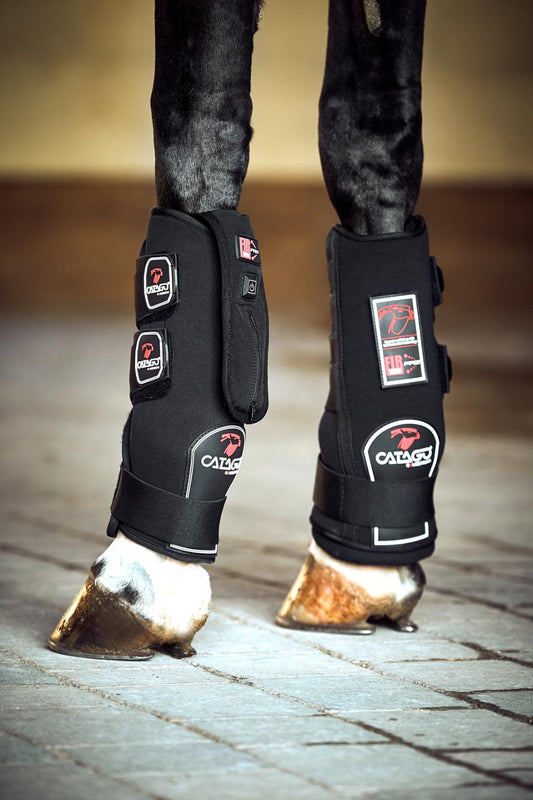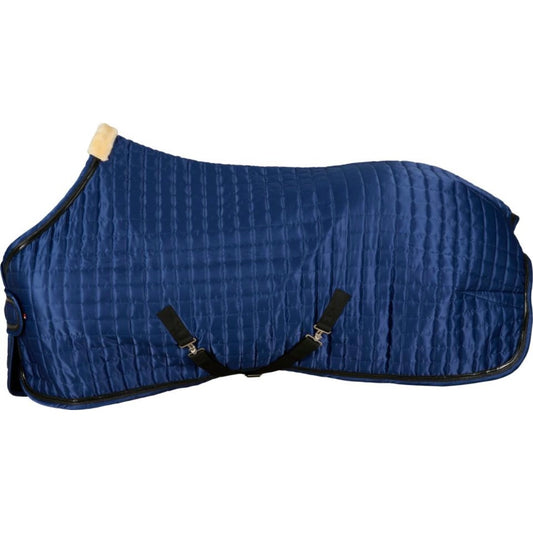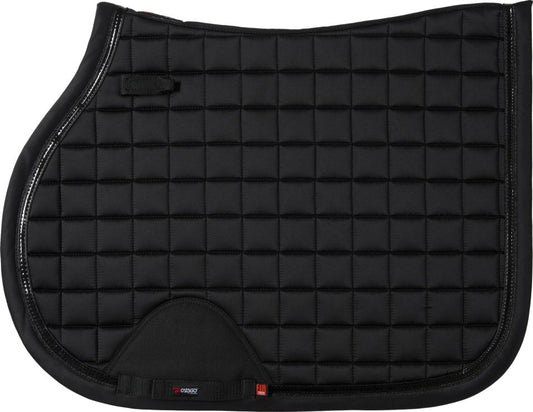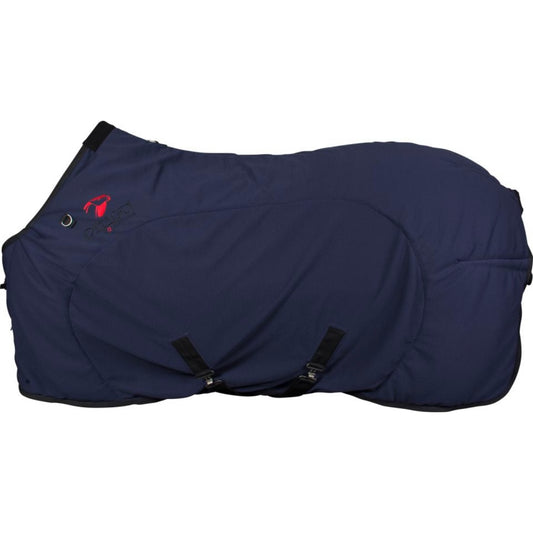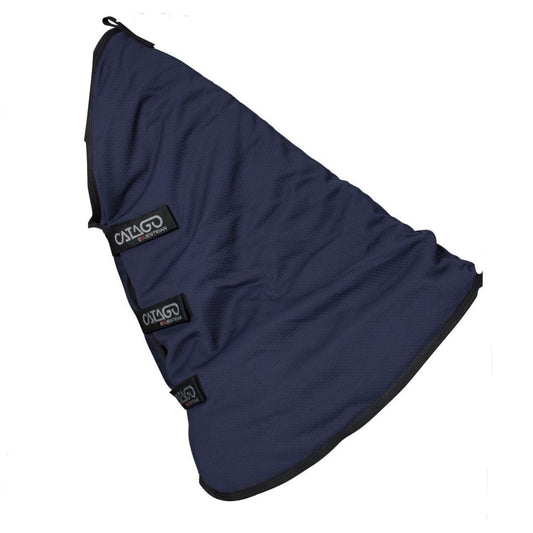Soft Tissue Injuries
Bruising / Hematoom
Bruising (or contusions) occurs when trauma causes blood vessels to break beneath the horse's skin, resulting in blood leaking into surrounding tissues. This leads to discoloration and swelling, typically seen in areas like the legs, shoulders, and ribs. Understanding the causes, prevention methods, and treatments for bruising can help in managing the condition effectively and ensuring your horse's quick recovery.
Causes of Bruising in Horses
Bruising in horses can result from a variety of causes:
- Impact Injury: Direct blows to the body, such as from kicking, bumping into objects like walls or fences, or from accidental collisions, are common causes of bruising.
- Falls or Stumbles: Horses that trip or fall may land heavily, causing bruising in areas like the knees, fetlocks, or other parts of the body.
- Excessive Pressure: Poorly fitting saddles, harnesses, or leg wraps can cause excessive pressure, leading to bruising due to restricted blood flow.
- Overexertion: Intense physical activity, especially on hard surfaces or uneven ground, can result in bruising, particularly in the legs and hooves.
- Kick or Bite Injuries: Conflicts with other horses can lead to bruising from kicks or bites, causing localized tissue damage.
- Trauma During Transport: Cramped trailers or excessive movement can cause bruising if the horse’s body collides with walls or dividers.
- Hoof-Related Bruises: Bruises can occur when horses step on rocks, uneven ground, or overexert themselves on hard surfaces, often causing pain or lameness.
How to Prevent Bruising in Horses
While it's challenging to prevent all types of trauma, the following steps can help reduce the risk of bruising:
- Proper Training and Groundwork: Ensuring your horse is well-trained to navigate different environments (such as uneven ground) reduces the chances of falls and injuries.
- Safe and Proper Fit of Tack: Always ensure that your horse’s tack (saddle, bridle, wraps) is properly fitted to avoid friction, pinching, or excessive pressure that can lead to bruising.
- Regular Hoof Care: Proper hoof maintenance, including regular trimming and appropriate support like hoof pads or boots, can reduce hoof-related bruising.
- Protective Gear: Consider using boots or leg wraps for horses involved in high-intensity activities, or those prone to bumps and knocks, as these can provide extra cushioning.
- Maintain a Safe Environment: Ensure the horse’s environment is free from obstacles that may cause injury, and pad equipment (such as trailer dividers) to minimize impact.
- Limit Intense Activity: If your horse is prone to bruising, avoid excessive exercise or sudden, intense activities, particularly on hard or rocky surfaces.
What to Do if Your Horse Has a Bruise
If your horse sustains a bruise, taking prompt action is important for a speedy recovery:
- Assess the Injury: Examine the affected area for signs of swelling, heat, and discoloration. Check if the horse shows signs of lameness or discomfort, especially in the legs.
- Rest and Avoid Exercise: Allow the horse to rest, avoiding any further strain on the bruised area. Depending on the severity, box rest may be necessary.
- Cold Therapy: Apply cold therapy (ice packs or cold water hosing) for 10-15 minutes at a time. This reduces inflammation and helps prevent swelling, especially within the first 24-48 hours.
- Check for Signs of Complications: Monitor the injury for signs of infection, such as increased swelling, heat, or discharge. If these symptoms appear, consult a veterinarian.
- Pain Relief: Consult your veterinarian for appropriate pain relief options, such as anti-inflammatory medications or NSAIDs, to help reduce swelling and discomfort.
- Gentle Massage and Stretching: After the acute phase has passed, gentle massage and stretching (if not causing pain) can help restore mobility and reduce stiffness.
Therapies for Bruising in Horses
Several therapies can speed up the recovery process and minimize discomfort for horses with bruises:
- Cold Therapy: Essential within the first 48 hours, cold therapy helps reduce swelling and inflammation. Cold hosing or ice packs can be applied to the injured area.
- PEMF Therapy (Pulsed Electromagnetic Field Therapy): Stimulates cellular repair, enhances circulation, and promotes healing in bruised tissues.
- Infrared Therapy: Improves blood circulation, removes waste products from the injured area, and accelerates healing, while also offering soothing relief from pain.
- LED Therapy: Uses light energy to stimulate healing in soft tissues, reducing inflammation and pain, while promoting blood flow and cell regeneration.
- Vibration Therapy: Improves circulation and helps muscles relax, accelerating recovery in bruised areas.
- Massage Therapy: Gentle massage after the acute pain has subsided can alleviate stiffness and discomfort. Ensure the horse is not in pain before proceeding.
- Cooling Therapy: Specialized cooling wraps can be used in addition to ice packs, providing consistent cold compression to reduce swelling, particularly in the legs or joints.
- NMES Therapy (Neuromuscular Electrical Stimulation): Stimulates muscle recovery and prevents muscle atrophy while the horse rests. It also helps reduce swelling in the affected areas.
Conclusion
Bruising in horses is a common injury caused by trauma, falls, pressure, or overexertion. Although it’s impossible to prevent every bruise, proper training, fitting of tack, and maintaining a safe environment can help minimize the risk. If your horse does sustain a bruise, rest, cold therapy, and monitoring for complications are essential steps. Utilizing therapies like PEMF, infrared, LED, and cooling therapy can accelerate healing and reduce discomfort, leading to a faster recovery. Always consult with a veterinarian if the injury seems severe or shows signs of complications.
Soft Tissue Swelling
Soft tissue swelling in horses refers to the accumulation of fluid or inflammation in the muscles, tendons, ligaments, or fascia. This condition can arise from various causes, including trauma, overuse, infection, or inflammatory disorders. Proper management is essential to prevent further complications, such as pain or lameness, and to promote healing.
Causes of Soft Tissue Swelling in Horses
There are several potential causes for soft tissue swelling in horses:
- Trauma or Injury: A direct blow, strain, or sprain can lead to soft tissue damage and swelling. This is commonly caused by accidents, kicks, falls, or collisions.
- Overexertion or Exercise-Induced Injury: Intense or excessive physical activity can stress muscles and tendons, resulting in swelling, especially in horses engaged in repetitive movements.
- Infection or Abscess Formation: Bacterial infections entering through wounds can lead to swelling and abscesses in the soft tissues, accompanied by heat, redness, and sometimes fever.
- Lymphatic Drainage Issues: Impaired circulation or lymphatic drainage can cause fluid accumulation, particularly in the lower legs, resulting in swelling.
- Inflammatory Conditions: Conditions like tendinitis, bursitis, or myositis cause inflammation and swelling in the soft tissues due to overuse, improper training, or repetitive motion.
- Edema: Fluid buildup, often related to heart failure, kidney issues, or poor circulation, can lead to swelling that may be a sign of a systemic problem.
- Allergic Reactions: Insects, medications, or environmental allergens can cause localized swelling, commonly in the legs or face.
- Post-Surgical Swelling: Swelling following surgery is a normal part of the healing process but should be monitored for any complications, such as infection.
How to Prevent Soft Tissue Swelling in Horses
Preventing soft tissue swelling involves focusing on injury prevention and overall horse health:
- Proper Training and Conditioning: Gradually increase exercise intensity to help the horse’s muscles and tendons adapt. Adequate conditioning reduces the risk of overexertion and injury.
- Use of Protective Gear: Equip your horse with boots, leg wraps, and bandages for high-intensity activities such as jumping or racing. This helps reduce the risk of injury and swelling.
- Warm-Up and Cool-Down: Ensure your horse warms up before exercise and cools down afterward. This helps avoid muscle strain and improves circulation.
- Adequate Rest and Recovery: Provide ample rest between intense training sessions to allow muscles to recover and avoid overworking the horse.
- Maintain a Safe Environment: Eliminate hazards such as sharp objects or uneven ground that could cause injuries and lead to swelling.
- Proper Hoof Care: Regular hoof trimming and proper care prevent uneven weight distribution and reduce the risk of leg injuries that could result in swelling.
- Adequate Nutrition: Provide a balanced diet to support muscle health and tissue repair. Nutritional deficiencies can contribute to the risk of injury and delay recovery.
- Manage Pre-existing Conditions: Address conditions such as arthritis or tendonitis early to prevent them from worsening and causing further swelling.
What to Do If Your Horse Has Soft Tissue Swelling
If your horse experiences soft tissue swelling, take the following steps to manage the condition:
- Assess the Injury: Examine the swollen area for signs of trauma, heat, or pain. Look for cuts, bruising, or puncture wounds that may indicate a more serious injury.
- Rest and Restrict Movement: Provide box rest and limit the horse’s movement to prevent further strain on the injured area.
- Cold Therapy: Apply cold therapy within the first 48 hours to reduce inflammation and swelling. Cold packs, ice, or cold hosing can be effective. Apply for 10-15 minutes, ensuring no direct contact with the skin to avoid frostbite.
- Compression: In certain cases, compression wraps can be used to control swelling, particularly in the legs. Ensure wraps are not too tight, as this can restrict circulation and cause harm.
- Monitor for Infection: If swelling is due to an injury, watch for signs of infection, such as increased redness, warmth, or discharge. If infection is suspected, contact your veterinarian.
- Pain Management: Consult your veterinarian for anti-inflammatory medications (such as NSAIDs) to reduce pain and inflammation.
- Veterinary Assessment: If swelling persists, worsens, or involves joints, seek veterinary help. Diagnostic imaging (like ultrasound or X-rays) may be needed to assess the extent of the injury.
Therapies for Soft Tissue Swelling
Several therapies can help accelerate healing and reduce swelling:
- Cold Therapy: Cold therapy is crucial for reducing inflammation and preventing further swelling. It is typically the first step in treating soft tissue injuries.
- PEMF Therapy (Pulsed Electromagnetic Field Therapy): Stimulates tissue regeneration, reduces inflammation, and enhances circulation, promoting faster recovery.
- Infrared Therapy: Increases blood flow, reduces swelling, and helps relax muscles, aiding in the recovery process.
- LED Therapy: Uses light energy to stimulate healing in soft tissues, reduce inflammation, and improve circulation.
- NMES Therapy (Neuromuscular Electrical Stimulation): Enhances circulation and stimulates muscle recovery, preventing atrophy and reducing swelling.
- Vibration Therapy: Promotes blood circulation, reduces stiffness, and helps prevent further damage in the tissues.
- Massage Therapy: Gentle massage can improve blood flow and alleviate muscle tightness, helping speed up the healing process once swelling subsides.
Conclusion
Soft tissue swelling in horses is a common issue, often caused by trauma, overexertion, or inflammatory conditions. Prompt intervention is key to managing swelling and preventing complications such as pain, lameness, or further injury. By providing proper training, using protective gear, and addressing injuries early, the risk of swelling can be minimized. Additionally, therapies such as PEMF, infrared, and LED therapy can support the healing process by reducing inflammation and promoting circulation. Always consult a veterinarian if swelling persists or worsens to ensure proper care and diagnosis.
Skin Abrasions
A skin abrasion is a superficial injury where the top layers of the skin are scraped or rubbed off. These injuries primarily affect the epidermis and, while they may seem minor, can lead to discomfort and potential complications, such as infection, if not treated properly.
Causes of Skin Abrasions in Horses
Skin abrasions in horses can occur for various reasons, including:
- Trauma or Impact: Abrasions often result from direct contact with rough surfaces. Falls, scrapes against fences, or kicks from other horses can cause these injuries.
- Rubbing Against Objects: Horses may develop abrasions from rubbing against rough surfaces like fences, gates, or stall walls, especially in areas with thinner skin like the sides, withers, and legs.
- Tight or Improper Equipment: Ill-fitting tack, girths, or blankets may cause friction, leading to abrasions, especially when horses are ridden or worked in gear that doesn’t fit correctly.
- Overexertion: Prolonged or intense physical activity can cause abrasions due to repetitive friction or movement.
- Fighting or Aggression: Horses engaging in aggressive behavior (e.g., biting or kicking) can develop abrasions from contact with other horses' teeth, hooves, or rough surfaces.
- Environmental Factors: Exposure to rocky or abrasive surfaces, especially in uneven terrain, increases the risk of abrasions.
How to Prevent Skin Abrasions in Horses
Preventing skin abrasions involves reducing risk factors and providing a safe environment:
- Proper Fit of Equipment: Ensure that tack, blankets, girths, and saddles fit well. Tight or ill-fitting gear can cause rubbing and pressure points leading to abrasions. Regularly check the fit of your equipment.
- Safe Handling and Housing: Ensure the stall, paddock, or turnout area is free from sharp or abrasive surfaces. Softer bedding or rubber mats in stalls can help reduce friction from rough floors.
- Controlled Exercise and Turnout: Avoid sudden, intense exertion that could lead to abrasions. Consider limiting turnout in areas with rough ground or use protective boots or leg wraps.
- Gentle Grooming: Use soft, gentle brushes during grooming to avoid abrasions caused by friction. Over-aggressive grooming should be avoided.
- Preventive Care During Transportation: When transporting, ensure the horse is securely cushioned and use shipping boots or leg wraps to prevent rubbing against the trailer.
- Monitor for Aggressive Behavior: If your horse is housed with others, observe their behavior to prevent aggressive encounters that could result in bites or kicks leading to abrasions.
What to Do if Your Horse Develops a Skin Abrasion
If your horse develops a skin abrasion, it’s important to treat it promptly to prevent infection and promote healing:
- Clean the Affected Area: Gently clean the abrasion with mild soap and clean water to remove dirt, debris, and bacteria. Avoid harsh chemicals unless recommended by a veterinarian.
- Assess the Severity: Minor abrasions may not require veterinary attention. However, if the injury is deep, bleeding heavily, or showing signs of infection (redness, pus, swelling), contact your veterinarian immediately.
- Apply Antiseptic or Ointment: After cleaning, apply an antiseptic ointment (e.g., iodine-based solutions or chlorhexidine) to prevent infection and maintain moisture for healing. Avoid bandaging unless instructed by a vet.
- Box Rest: Limit the horse’s movement to prevent further irritation and promote healing. Box rest may be necessary depending on the abrasion's location and severity.
- Monitor for Infection: Check for signs of infection such as swelling, redness, or discharge. If these signs occur, consult your veterinarian for further treatment.
- Prevent Scratching or Rubbing: If the horse tends to scratch or rub the injury, apply a protective bandage or soft wrap to prevent further trauma.
Therapies to Aid in the Healing of Skin Abrasions
Several therapies can aid in promoting healing and preventing complications:
- Cooling Therapy: Apply cold therapy (cold packs or ice) to reduce swelling and pain within the first 48 hours of the injury.
- Infrared Therapy: Stimulates blood flow, increases tissue regeneration, and reduces inflammation, promoting healing and relieving pain.
- PEMF Therapy (Pulsed Electromagnetic Field): Enhances tissue repair and reduces inflammation, helping speed up the healing process.
- LED Therapy: Uses light energy to stimulate cellular activity, accelerating tissue repair and reducing the formation of scar tissue.
- Vibration Therapy: Stimulates circulation and lymphatic drainage, aiding in the healing of soft tissue injuries, including skin abrasions.
- NMES (Neuromuscular Electrical Stimulation): Especially beneficial for abrasions affecting muscles, NMES promotes healing by enhancing blood flow and reducing inflammation.
Conclusion
Skin abrasions are common injuries in horses caused by trauma, friction, or pressure. While typically not severe, they still require prompt care to prevent infection and ensure proper healing. Prevention strategies like proper equipment fit, safe handling, and environmental management are key in reducing the risk. In the event of an abrasion, cleaning the area, applying antiseptic, and considering therapies like cooling therapy, infrared, PEMF, or LED therapy can help with recovery. Always consult a veterinarian if the abrasion worsens or fails to heal properly.


